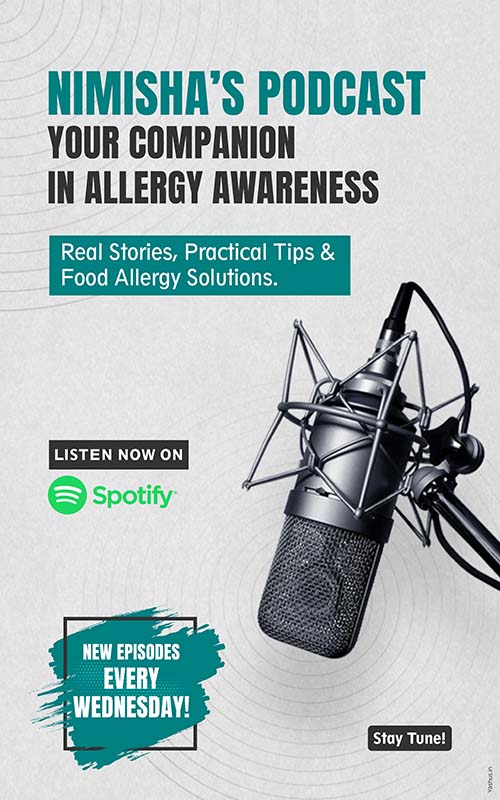
Food allergies have become an increasingly prevalent issue in modern society, affecting millions of people worldwide. With food allergies on the rise, diagnosing food allergies and understanding how to detect and manage them has never been more important. One of the key methods for food allergy diagnosis and treatment is food allergy testing, which helps individuals identify which foods trigger allergic reactions.
However, like any medical test, food allergy testing can be confusing. How should one prepare for it, and what do the results really mean? This article delves into the types of tests for food allergies, how to prepare for them, and how to interpret the results effectively.
Types of Food Allergy Testing
Food allergy diagnosis and treatment generally falls into two main categories: skin tests and blood tests.
Skin Prick Test

This is one of the most common tests for food allergies. In a skin prick test, small amounts of potential allergens (often including food proteins) are applied to the skin. A small needle or lancet is used to make a tiny prick, allowing the allergen to enter. If the person is allergic, a raised bump or hive will form at the site. This test is fast, simple, and cost-effective—often used in early stages of diagnosing food allergies.
Blood Test (ImmunoCAP)

In this test, a blood sample is analyzed for IgE antibodies that respond to allergens. Elevated levels suggest a food allergy. This test is especially helpful for patients with skin conditions or those unable to undergo a skin prick test. It’s also used for food sensitivity test purposes when symptoms are mild but persistent.
In some cases, your doctor might recommend a food intolerance test or food tolerance testing to differentiate between allergy and intolerance. These tests assess how your body reacts to certain foods over time, especially when symptoms like bloating, fatigue, or digestive issues appear after eating specific foods.
How to Prepare for Food Allergy Testing

While food allergy diagnosis and treatment are straightforward with proper testing, preparation ensures accuracy:
-
Avoid Antihistamines: Before a skin prick test or food sensitivity test, antihistamines can interfere with the results. Stop taking them 5–7 days prior to testing, as recommended by your doctor.
-
Refrain from Certain Foods: For those undergoing an oral food challenge, your provider may ask you to avoid specific foods ahead of time. This step is often paired with food intolerance testing to monitor reactions in a controlled setting.
-
Share Your Medical History: Inform your doctor of past symptoms or episodes of anaphylaxis. A complete history helps in choosing the most appropriate tests for food allergies or food intolerance tests.
-
Test Timing Matters: Schedule tests when you are not experiencing a reaction, especially for at home food allergy tests or clinical evaluations. Acute symptoms can influence the outcome.
Understanding the Results
Positive Results
A positive result shows that your immune system has reacted to a particular food allergen. However, a positive test doesn’t always confirm a full allergic reaction—it could be sensitization, meaning your immune system has identified an allergen but may not trigger visible symptoms. Many food sensitivity tests and food tolerance tests report similar outcomes.
Negative Results
A negative test result generally means there’s no allergy to the food tested. But if symptoms persist, more investigation is needed. Conditions like gluten intolerance may require a gluten intolerance test or other food intolerance testing approaches.
False Positives and Negatives
No test is perfect. Whether it’s a blood test, at home food allergy test, or a food intolerance test, results must be interpreted alongside symptoms and history. Consulting a healthcare provider ensures a more accurate diagnosis and treatment plan.
Conclusion
Food allergy testing is a vital step in diagnosing food allergies and guiding food allergy diagnosis and treatment. By preparing correctly—avoiding medications, managing dietary intake, and working with a medical provider—you can ensure the most accurate results.
Understanding the difference between a food allergy, food sensitivity, and food intolerance is key. Through professional or even at home food allergy tests, you can discover how your body reacts to specific foods, manage symptoms, and live a healthier life.
For ongoing digestive issues, fatigue, or unexplained symptoms, food tolerance testing can help pinpoint the root cause and guide your nutrition journey. Always consult with a specialist before making dietary changes or interpreting results on your own.
Discover how allergy gadgets are transforming food allergy awareness and daily management in our related blog.
FAQ
-
Food intolerance affects digestion, while food allergies trigger an immune system response, which can be more serious and immediate.

-
Accuracy varies; clinical tests are more reliable than most at-home kits. Always consult a healthcare professional for diagnosis.

-
It typically includes elimination diets, blood tests, or skin prick tests to identify how your body reacts to certain foods.

-
At-home tests are convenient but should not replace professional testing. Use them as a preliminary guide, not a definitive answer.

-
If you frequently experience symptoms like hives, swelling, digestive issues, or breathing difficulty after eating specific foods.













